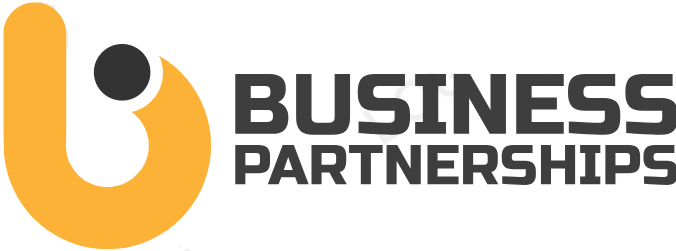Navigating Legal Challenges in Business Partnerships: Advice from Top Canadian Law Firms
In Canada, DUI (Driving Under the Influence) law firms play a crucial role in defending individuals charged with impaired driving offenses. These firms not only navigate complex legal landscapes but also employ effective business partnership strategies to ensure success in their operations. This article explores how DUI law firms in Canada integrate business strategies with legal tactics to achieve positive outcomes for their clients and maintain sustainable practices.
The Role of DUI Law Firms in Canada
DUI law firms specialize in representing individuals charged with impaired driving offenses, which can include alcohol and drug-related charges. Their primary role is to provide legal defense, protect the rights of their clients, and seek the best possible outcomes, such as reduced penalties or dismissed charges. These firms operate within the framework of Canadian law, which mandates strict penalties for impaired driving to ensure road safety.
Business Strategies for DUI Law Firms
1. Client-Centered Approach
Successful DUI law firms prioritize a client-centered approach, focusing on understanding their clients’ needs and providing personalized legal counsel. This involves:
- Initial Consultations: Conducting thorough consultations to assess the specifics of the case, gather evidence, and develop a tailored defense strategy.
- Clear Communication: Maintaining open and transparent communication with clients throughout the legal process, explaining legal options, potential outcomes, and the steps involved in their defense.
- Empathy and Support: Providing emotional support and reassurance to clients facing stressful legal proceedings, ensuring they feel supported throughout their case.
2. Strategic Marketing and Branding
Effective branding and marketing strategies help DUI law firms attract clients and establish a reputable presence in the legal market. Key strategies include:
- Online Presence: Developing a professional website that showcases the firm’s expertise, services offered, client testimonials, and legal resources related to DUI cases.
- Content Marketing: Publishing informative blog posts, articles, and case studies that educate potential clients about DUI laws, legal rights, and defense strategies.
- Social Media Engagement: Utilizing platforms like LinkedIn, Twitter, and Facebook to engage with the community, share legal insights, and increase visibility among potential clients and referral sources.
3. Efficient Case Management
Streamlining case management processes is essential for DUI law firms to handle cases efficiently and effectively. This includes:
- Legal Technology: Implementing case management software and legal technology tools to organize case files, track deadlines, manage client communications, and improve workflow efficiency.
- Team Collaboration: Facilitating collaboration among legal teams, paralegals, and administrative staff to ensure all aspects of a client’s case are managed promptly and accurately.
- Client Portal Access: Offering clients secure access to a portal where they can view case updates, upload documents, and communicate with their legal team conveniently.
Legal Tactics Employed by DUI Law Firms
1. Comprehensive Case Analysis
DUI law firms conduct thorough analyses of each case to identify strengths, weaknesses, and potential legal defenses. This includes:
- Evidence Review: Scrutinizing police reports, witness statements, breathalyzer test results, and any other evidence to identify discrepancies or procedural errors.
- Expert Witnesses: Engaging forensic experts, toxicologists, and accident reconstruction specialists to provide expert testimony and support defense strategies.
- Pre-Trial Motions: Filing motions to suppress evidence obtained unlawfully or challenge the legality of traffic stops, breath tests, or field sobriety tests.
2. Negotiation Skills and Plea Bargaining
Effective negotiation skills are crucial for DUI law firms to secure favorable plea bargains or reduced charges for their clients. This involves:
- Preparation: Conducting extensive preparation and research to build a strong case and negotiate from a position of strength.
- Negotiation Tactics: Engaging in constructive negotiations with prosecutors to reach agreements that minimize penalties while protecting the client’s rights and interests.
- Alternative Sentencing: Advocating for alternative sentencing options, such as rehabilitation programs or community service, to mitigate the consequences of a DUI conviction.
3. Trial Advocacy
For cases that proceed to trial, DUI law firms employ skilled trial advocacy techniques to present compelling arguments and defend their clients vigorously. This includes:
- Jury Selection: Participating in jury selection processes to identify impartial jurors who will objectively consider the evidence presented.
- Opening Statements: Delivering persuasive opening statements that outline the defense strategy, highlight key arguments, and set the tone for the trial.
- Cross-Examination: Conducting thorough cross-examinations of prosecution witnesses to challenge their credibility and weaken the prosecution’s case.
- Closing Arguments: Delivering powerful closing arguments that summarize the defense’s position, reinforce key points, and appeal to the jury’s sense of reason and justice.
Ethical Considerations and Professional Standards
DUI law firms in Canada adhere to strict ethical standards and professional conduct rules to uphold the integrity of the legal profession. This includes:
- Confidentiality: Safeguarding client confidentiality and ensuring that all client information remains privileged and protected.
- Conflict of Interest: Avoiding conflicts of interest by maintaining impartiality and prioritizing the client’s best interests at all times.
- Continuing Education: Engaging in ongoing professional development and legal education to stay informed about changes in DUI laws, legal precedents, and defense strategies.
Partnering for Canadian success in DUI law firms as Zamani-Law criminal defence lawyer Brampton involves integrating effective business strategies with robust legal tactics to achieve positive outcomes for clients. By prioritizing client-centered approaches, strategic marketing, efficient case management, and employing skilled legal tactics, DUI law firms can navigate complex legal challenges, uphold ethical standards, and maintain sustainable practices in the competitive legal landscape of Canada’s DUI defense sector. Through dedication to excellence and commitment to client advocacy, these firms play a crucial role in protecting the rights and interests of individuals facing DUI charges, ensuring access to fair and effective legal representation.
